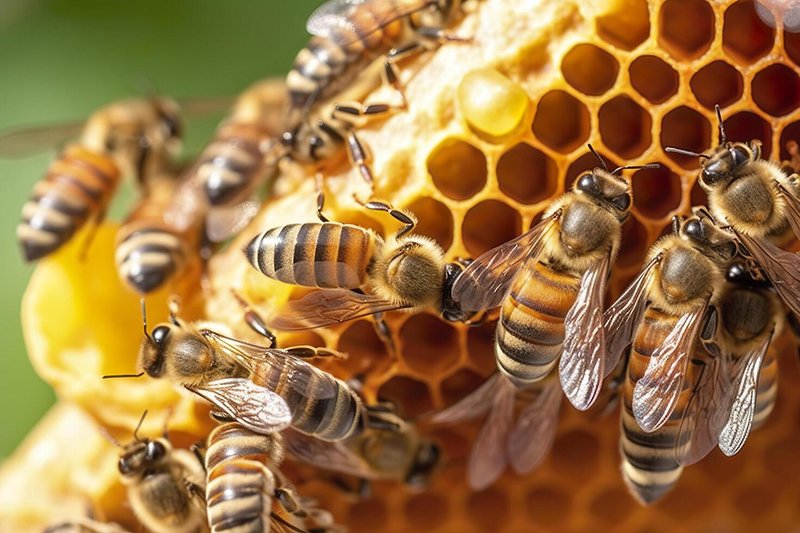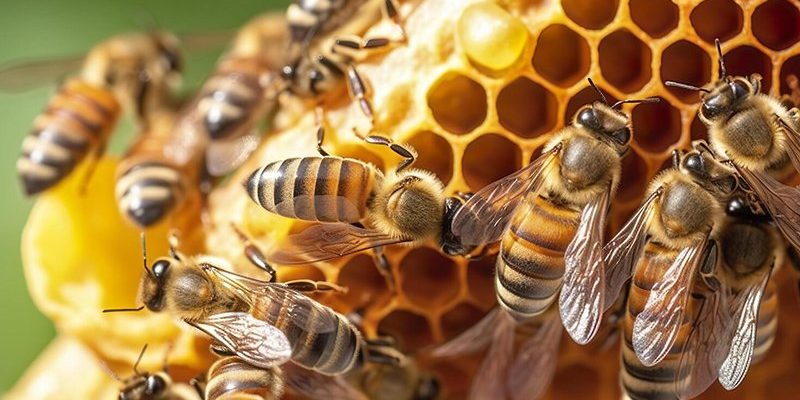
Imagine sitting in a coffee shop, and instead of chatting with your friends, you had to convey everything through dance moves and smells. Sounds tricky, right? That’s a little bit like how honey bees share important information with one another. They rely on a mix of pheromones (those chemical signals that smell like something sweet) and unique dances to relay messages about food, hive health, and even threats. Now, let’s take a closer look at how this all works.
The Language of Dance: The Bee Waggle Dance
One of the most intriguing ways honey bees communicate is through the waggle dance. When a forager bee discovers a rich source of nectar, it returns to the hive and performs this dance to share the location with others.
The waggle dance looks a bit like a figure-eight pattern that includes a waggle run. During this run, the bee waggles its body while moving in a straight line. The direction of the dance indicates where the food source is relative to the sun. For instance, if the bee waggles straight up, that means the food is directly in the direction of the sun. It’s like a map made of movement!
The duration of the waggle portion also conveys information. A longer waggle means the food is further away, while a shorter waggle indicates it’s closer. This form of communication is effective because it helps other bees efficiently find food, which is crucial for the colony’s survival. Isn’t that mind-blowing?
Pheromones: Chemical Signals That Matter
Besides their dance moves, honey bees are masters at using pheromones. These chemical signals allow them to communicate a variety of messages without ever uttering a sound. Worker bees, queen bees, and even drones produce specific pheromones that signal different needs and statuses within the hive.
For example, when a queen bee is ready to mate or has laid eggs, she releases a special pheromone that signals her presence and health to the worker bees. This chemical signal helps maintain harmony in the hive. If the queen is removed or her pheromone levels drop, worker bees might feel stressed and start behaving erratically.
Interestingly, when a honey bee encounters a threat, like a predator, it releases an alarm pheromone. This signals fellow bees to become alert and can even trigger defensive behaviors, like stinging. It’s like a built-in security system for the hive, helping to protect every member.
While dance and pheromones are essential, honey bees also use sound to communicate. They produce different buzzes and vibrations, most commonly through their wings. These sounds can indicate a range of messages—everything from excitement about food to the need for a reminder to stay together as a group.
For instance, a low-frequency buzz may indicate a warning, while rapid buzzing can express excitement or urgency, like when a bee finds a great nectar source. Researchers have even found that when honey bees hum at a certain frequency, it can help regulate the temperature of the hive, especially during colder months. Sound, combined with their other communication methods, creates a complex network of interaction.
How Bees Interact and Form Relationships
The life of a honey bee is all about community and cooperation. They interact not just to share food or threats but also to build strong relationships within the hive. Worker bees take on different roles throughout their lives, from cleaning the hive to caring for larvae, and each task is vital for the colony’s success.
When bees perform tasks together, they strengthen their bonds. For example, when they groom each other, it helps strengthen their social connections and ensures the hive stays healthy. Grooming removes parasites and dirt, and it’s also a way to share pheromones that promote hive unity. Think of it like a team-building exercise!
Interestingly, if a bee is isolated or removed from the colony, it may struggle to reintegrate. This shows how intertwined their interactions are and how they thrive on social bonds to function effectively.
The Importance of Communication for Hive Survival
Honey bees communicate not just for fun but for survival. Their intricate systems ensure that the colony can function smoothly, find food, and defend against threats. Without communication, the hive would be chaotic, and the bees would struggle to survive.
For example, when food sources are scarce, the communication between bees becomes even more critical. The quicker bees can relay information about new food sources or alert the hive to danger, the better the chances for the entire colony. This level of cooperation highlights how essential it is for them to communicate effectively.
You might be wondering why this matters to us. Well, honey bees play a significant role in pollination, affecting global food supply. Understanding their communication helps us appreciate the intricate lives they lead and underscores the importance of protecting their habitats.
Final Thoughts on Bee Communication
The world of honey bee communication is truly remarkable. From the way they dance to the chemical signals they use, it’s a well-oiled machine that enables these tiny creatures to thrive in their environment. Their interactions not only ensure their survival but also support the ecosystems that rely on them for pollination.
So next time you see a honey bee buzzing around, remember there’s a whole world of communication happening just beneath the surface. Recognizing their complex social lives can help us appreciate these important creatures even more. If we protect their habitats and understand their vital roles, we’re doing our part to maintain the delicate balance of our environment. Isn’t that something worth buzzing about?

